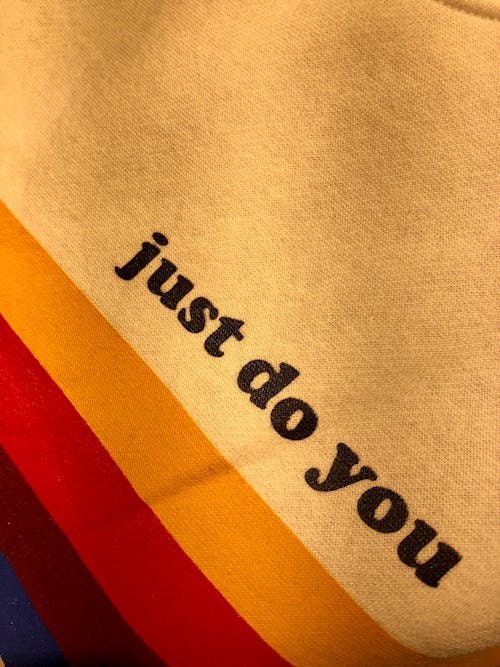How to Make Persistence Pay Off
My psychology students, all 21 of them, bent over the slips of paper I handed out moments before. Most had quickly worked through the first challenge on the paper. As the minutes ticked, most accomplished solving the second problem on the sheet. Within about 10 minutes ¾ of the class put their pencils down and raised their hands to indicate they had completed the task.

The five students still working were scattered amongst those who were finished. Their body language – shifting in their seats, chewing their bottom lips, gripping their fingers into fists – indicated that they were feeling pressure and frustration. Determined to not be outdone by their classmates or my little challenge, they continued to scribble out answers then scratch through those answers to scribble out new solutions that would then be scratched through. They persisted in their effort far longer than even I had anticipated they would.
President Calvin Coolidge is credited with saying, “Nothing in this world can take the place of persistence.” I beg to differ. Persistence alone will not solve the problem, move the dial, or save the day.
Just ask the five students who struggled to solve the puzzle on their paper. It wasn’t their fault, of course, and their inability to solve it didn’t reflect poorly on them. I had intentionally given five students an unsolvable anagram. All 21 students received a paper with three anagrams to solve. The anagrams in the sequence became progressively more challenging. Nonetheless, 16 students received a list of anagrams that were solvable. Five randomly selected students received tow solvable anagrams and a third unsolvable one.
No amount of persistence would have ever rewarded them w
ith the outcome they sought.
 Persistence, also known as grit, can lead to astounding success. It allows the underdog to rise up and overcome obstacles to achieve what no one thought he could. Don’t misunderstand me. I believe in the power of persistence.
Persistence, also known as grit, can lead to astounding success. It allows the underdog to rise up and overcome obstacles to achieve what no one thought he could. Don’t misunderstand me. I believe in the power of persistence.
I believe in the power of persistence when there is a plan. Without a thoughtful plan, a person is engaging in blind persistence, which can result in sticking with a faulty strategy
, working at accomplishing something that cannot be accomplished, or attempting to solve something that isn’t the true problem.
Blind persistence leads to
- The creation of false obstacles.
- Feelings of frustration and defeat.
- Self-comparison to others.
- Negative self-talk.
- Feeling helpless.
- Physical, mental, and emotional exhaustion.
- Impaired decision making skills.
- Impaired communication skills.
To make persistence work for you
- Identify the real problem that needs to be solved
- Determine if that “problem” is something that needs a solution or simply needs you to make a choice.
- Identify what you know from prior experience with this or similar problems.
- Identify what you already know about the current situation.
- Clarify for yourself if this is a problem or goal that is important to you or if it is something you are trying to accomplish because you think you should, you think others want you to, or you fear you’ll be judged negatively if you don’t.
- Create a plan for persistence that specifically states the end goal, the actions you will take, when you will take each action, how much time you will commit to each action, the resources (including people) you will use to help you complete each action, what success will look like at each step along the way, and the timeline (including end date) for achieving your stated goal.
- Stick with (persist with) the plan.


 For many of us, that nasty green monster has followed us into adulthood. It nips at our heels. It snatches at our ankles. Fear of it keeps us up at night. Exhaustion from fending it off drives us to hide deep under our covers.
For many of us, that nasty green monster has followed us into adulthood. It nips at our heels. It snatches at our ankles. Fear of it keeps us up at night. Exhaustion from fending it off drives us to hide deep under our covers. In his book, The Coaching Habit, Michael Bungay Stanier, discusses the three Ps of every problem. And every problem can be analyzed to discover its three Ps. Essentially, they stand for: Project, People, Patterns. Each one contributes to the problem and, if appropriately addressed, can contribute to the solution(s). Project is the task. People refers to relationships we have with others. Patterns expands to our patterns of behavior.
In his book, The Coaching Habit, Michael Bungay Stanier, discusses the three Ps of every problem. And every problem can be analyzed to discover its three Ps. Essentially, they stand for: Project, People, Patterns. Each one contributes to the problem and, if appropriately addressed, can contribute to the solution(s). Project is the task. People refers to relationships we have with others. Patterns expands to our patterns of behavior. Wow! The look on his face once he had finished his analysis. He had dragged his big green monster out into the open, was looking straight into its cesspool eyes, and staring it down! He had clarity on how to wage his attack and could focus his efforts one P at a time. His monster was shrinking SMALLER, and Smaller, and smaller.
Wow! The look on his face once he had finished his analysis. He had dragged his big green monster out into the open, was looking straight into its cesspool eyes, and staring it down! He had clarity on how to wage his attack and could focus his efforts one P at a time. His monster was shrinking SMALLER, and Smaller, and smaller.

